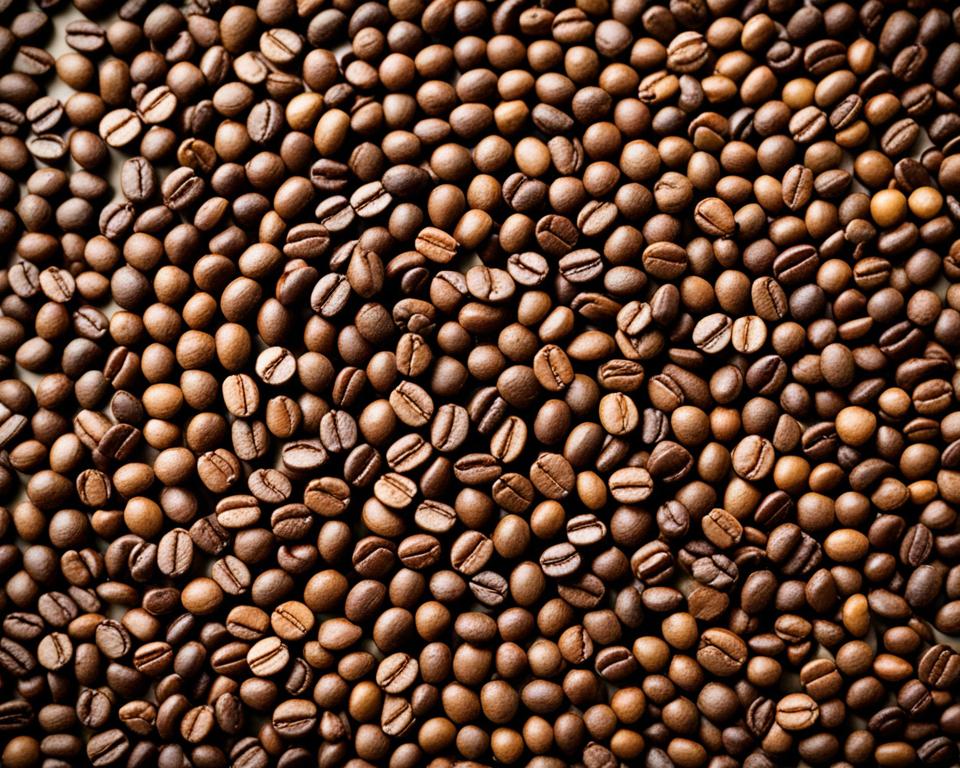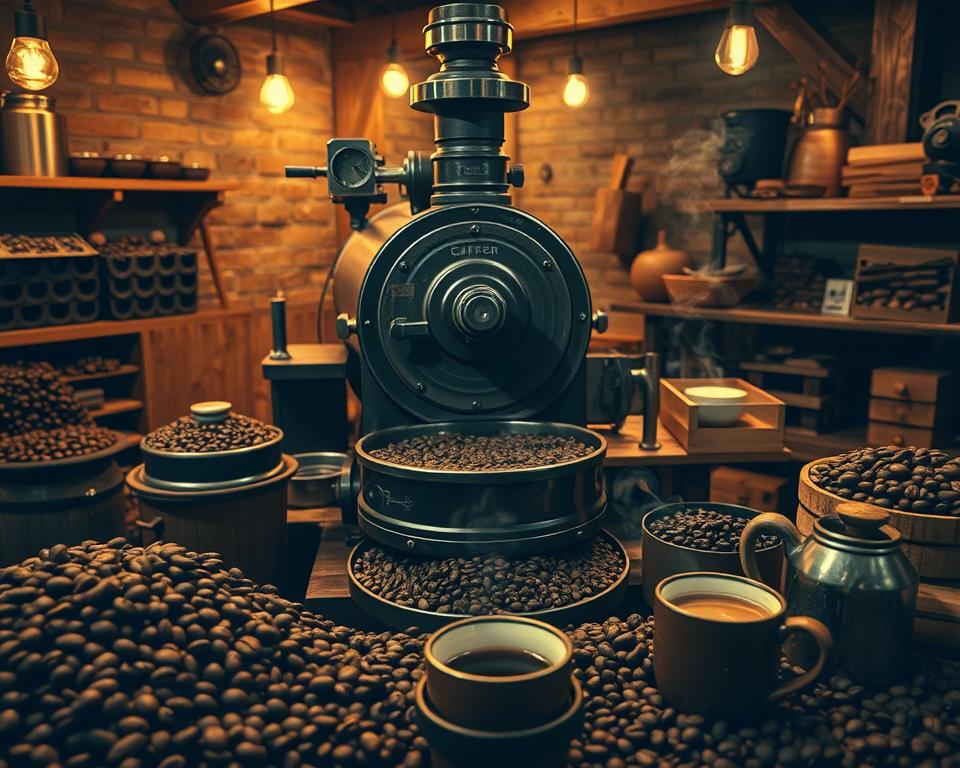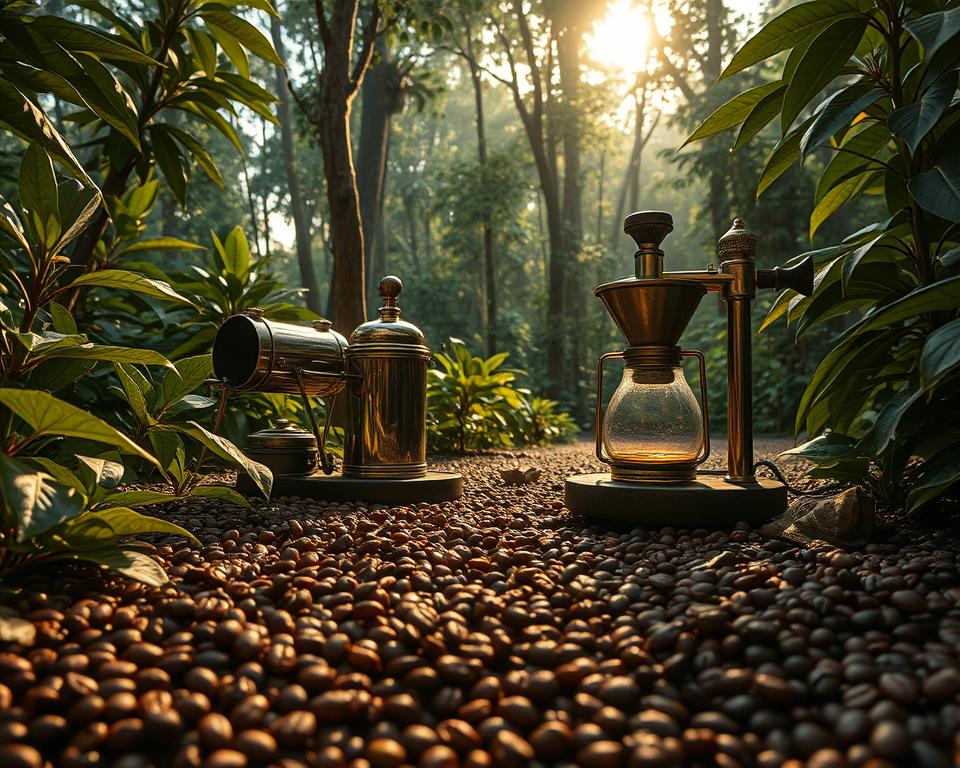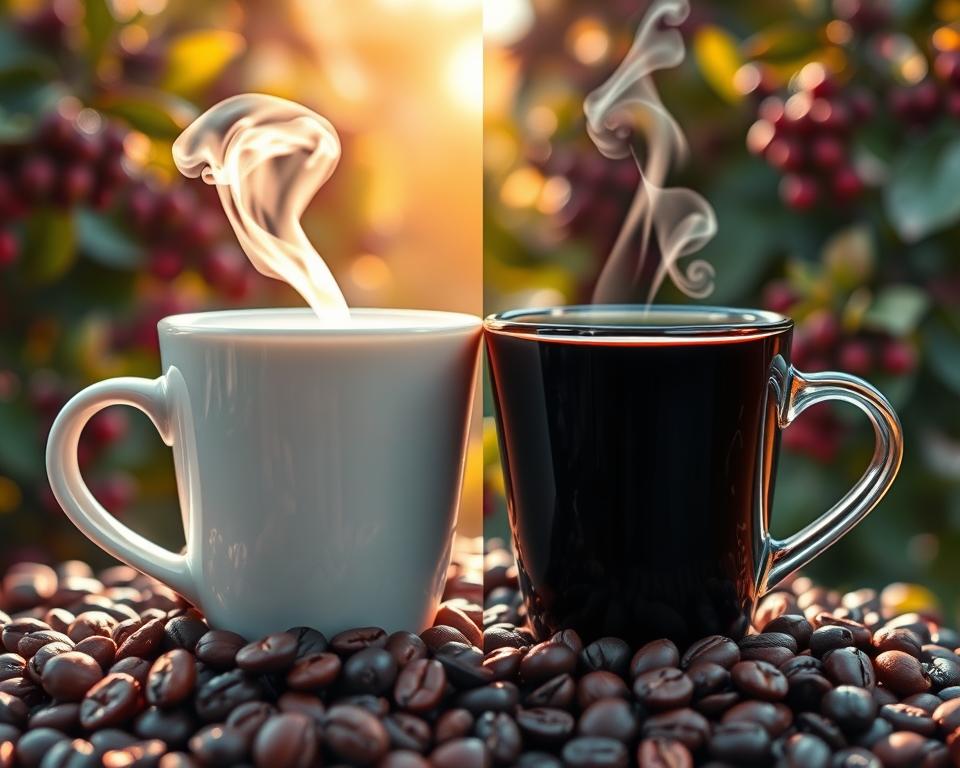Did you know the size of a single origin area isn’t clearly defined? It varies by region. This means a single origin coffee could include several small farms or just one big estate. In Africa, it may just be from one washing station.
The flavour of a place, with its unique climate and soil, is reflected in my morning coffee. Stories of farmers come through with every sip. Driftaway Coffee brings these stories to us, highlighting the value of specialty and ethically sourced coffee.
The link between taste and location is strong. This, along with supporting fair pay for producers, elevates single-origin coffees. They might be pricier, but the unique taste and support for organic and fair trade coffee are worth it.
Key Takeaways
- Understanding the wide definitions of single-origin areas.
- Appreciating the unique characteristics of single-origin coffees.
- Recognising the stories and farmers behind each cup.
- Importance of direct trade coffee and ethical sourcing.
- Supporting fair pay and transparency in the coffee market.
The Unparalleled Journey of Single Origin Coffee from Farm to Cup
The journey of Single Origin Coffee starts in ideal spots like Kenya’s hills. It thrives in rich volcanic soil at high altitudes with careful manual labor. This combination shapes each coffee bean’s fate.
I’ve met coffee artisans who follow strict processes when making single-origin coffee. They work at altitudes above 1700 meters. This slow growth leads to a complex flavour.
This coffee is more than its surroundings; it’s made with love and is unique in taste and quality.
- Hand-picked cherries ensure the highest quality.
- Each bean tells the story of its original soil.
- Artisanal roasting techniques turn each green bean into a messenger of flavour.
Experts and everyday drinkers love this coffee. It’s all about transformation.
Farmers approach every step they take with a sense of tradition and a strong commitment to producing high-quality products.They aim to make that perfect cup come to life.
Exploring the Unique Flavours and Aromas of Single Origin Coffee
Step into the world of single-origin coffee, a paradise for those who love different flavour profiles and unique aromas.
This special coffee comes from individual regions, showing the true spirit of where it’s from.
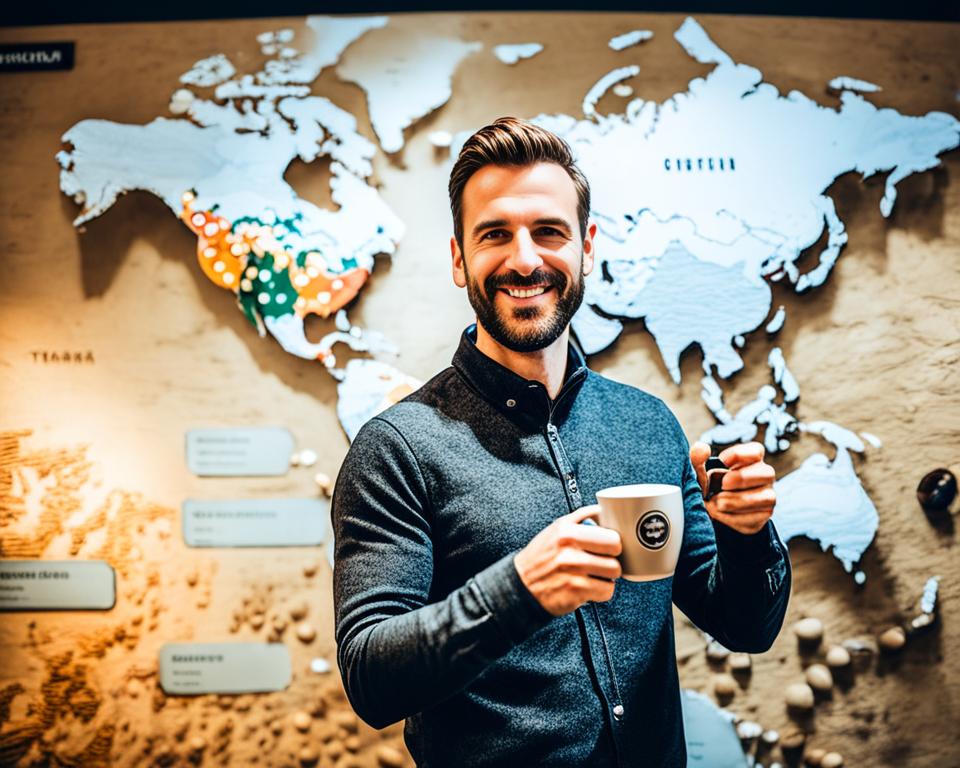
Every sip of single-origin coffee is more than just a taste. It tells the story of the land and the hard work of local farmers.
Each kind reveals the impact of climate, soil, and human effort, shaping its subtle aromas and flavours.
Varied Tasting Notes Across Different Origins
The variety of coffee flavours always catches my interest. Beans from various places can taste so different. For instance, Indonesian coffee might taste earthy, while a South American one could be brightly acidic.
This is because of the terroir, similar to how wine tastes vary. Ethiopia’s coffee might give you a hint of lemon, berries, or chocolate.
How Processing Methods Affect Taste
The way coffee is processed plays a huge role in its taste. The washed process makes for a cleaner taste with more acidity. Meanwhile, the sun-dried method brings out a fruitier, bolder flavour.
How it’s processed really matters for single-origin coffee’s unique traits.
Roasting: Unlocking the Bean’s Potential
Roasting is like magic that reveals what’s inside each coffee bean. It’s a delicate balance of heat and time. Light roasts show off the coffee’s natural brightness, while dark roasts bring out richer flavors. This step is crucial to highlighting the coffee’s original qualities.
Places like 7-Eleven don’t just offer quick stops but also a chance to discover global coffee flavours.
They provide single-origin coffee, letting customers taste coffee cultures from all over the world in their cups.
| Brewing Factor | Recommendation |
|---|---|
| Coffee to Water Ratio | 1:16 |
| Water Temperature | 195°F–205°F (90°C–96°C) |
| Steeping Time | 3 to 4 minutes |
| Pour-over Brew Time | 3 to 4 minutes |
| Espresso Shot Volume | 1.5 to 2 ounces |
| Espresso Extraction Time | 25 to 30 seconds |
The Art and Science of Coffee Processing
The magic of coffee processing links harvest to your morning cup. It transforms green coffee beans into a delight for the senses. For instance, take the washing process.
This method peels away the fruit layers of the bean, showing its true taste.
In places like Colombia, Brazil, and Indonesia, the land and weather affect the beans’ flavors. Each bean carries the mark of its home. The way beans are processed, like sun-drying or washing, brings out different flavours.
Coffee grading steps in here, judging by size and density to predict quality—the better the bean, the better the coffee.
Roasting these selected beans is a blend of science and art. Different roasts bring out different flavors. Light roasts give bright acidity and fruity notes; dark roasts offer deep, rich flavours.
My home experiments with a French press to drip show how grind and method can change coffee’s flavour.
| Region | Flavor Impact | Acidity | Processing Method |
|---|---|---|---|
| Colombia | Fruity, Caramel | Medium to High | Washed |
| Brazil | Chocolatey, Nutty | Low | Pulped Natural |
| Indonesia | Earthy, Spicy | Low | Semi-washed |

As a coffee lover, I find joy in every detail of coffee’s creation. It’s amazing how water chemistry, grind size, and brewing tools change a coffee’s taste.
Each sip carries appreciation for the journey. From the lush fields to the coffee processing that readies beans for roasting, it’s a complex tale.
Grading and Quality Control: Ensuring Single Origin Excellence
As a passionate coffee fan, I’ve seen how important the quality of single-origin coffee is. Coffee grading systems are essential for keeping its quality high.
They make sure these coffees are truly specialty-grade, giving us a unique taste.
Country-Specific Grading Systems
Exploring different coffee places, I’ve learned about various grading systems. Kenya, for instance, grades beans from AA to TT based on size.
Colombia has categories like Supremo and Excelso, affecting taste. Ethiopia’s grades, from 1 to 9, consider size, defects, and looks.
Cupping: Assessing Coffee Like a Pro
The cupping process examines every little detail. Cupping glasses hold 7 to 9 ounces for uniform tests. The perfect mix uses 8.25 grammes of coffee and 150 ml of water.
Graders look for beans with minimal defects for quality assurance.
They also check that the water has 125–175 ppm of total dissolved solids.
They use freshly ground beans for testing. A 16-point scale evaluates flavours, helping us understand our coffee’s taste.
The Link Between Specialty Grading and Price
Grading rigorously affects coffee prices. Specialty-grade beans cost more due to their high quality. Their flavours are carefully evaluated and rated from good to outstanding.
This process highlights the bean’s essence and justifies its higher price.
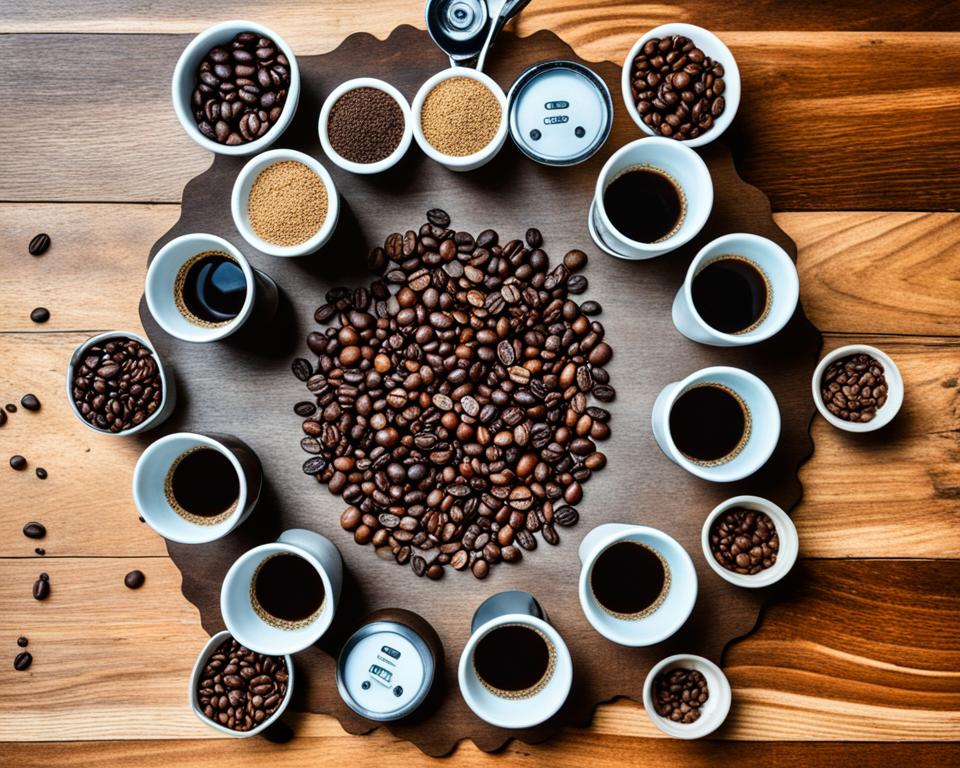
Understanding Pricing and Transparency in the Single Origin Coffee Market
Looking into specialty coffee pricing, key factors stand out. Quality leads the way. Knowing the origins of coffee explains the high prices. Efforts by farmers in places like Honduras and Ethiopia are significant.
They pick every bean carefully. This hard work shows in what we pay for our coffee.
Direct trade changes the game too. Roasters work directly with growers. This ensures fair wages and top-quality coffee. It means ethical sourcing and builds trust.
We learn the real story of our coffee through single-origin transparency. It’s not just fancy talk, but a real promise.
Even if supply and demand change, single-origin coffee holds a special place. Its rarity at times makes it even more valuable. But it’s the ethics and quality assurance that really set it apart.
Holding a cup of single-origin coffee, I appreciate the taste and the ethical journey it took to reach me.
Is Single Origin Coffee a Better Choice for Enhancing the Effects of Red Eye Coffee?
Single origin coffee, known for its unique flavors and distinctive profiles, can significantly enhance your red eye boost. This type of coffee often provides a cleaner taste, allowing the robust espresso to shine through. By choosing single origin, coffee lovers can elevate their morning ritual and enjoy a more refined caffeine experience.
Conclusion
In my dive into coffee’s world, I’ve learned something. The flavour of single-origin coffee beans comes from hard work and exactness. From the farm to my cup, every step makes single-origin coffee special.
It tells a story that reflects the diverse places the beans come from, bringing a mix of tastes that can be bright and fruity or deep and spicy.
I often choose the balanced taste of a house blend for my everyday coffee. Yet, the distinct taste of single-origin coffees captivates me. The process of picking and roasting these beans shows the skill needed to bring out their flavours.
These flavours are closely tied to their original land. For those who love coffee, single-origin coffees offer a unique journey. They stand out for their clarity and supreme quality.
More people enjoy coffee now than ever before, as the International Coffee Organisation reports. The special aromas in single-origin Arabica coffees show how unique these coffees are.
Whether it’s a daily treat or a new taste adventure, knowing about both house blends and single-origin coffees makes me love this drink even more. Coffee holds a dear place in the hearts of many of us.
FAQ
What makes single-origin coffee unique compared to blended coffees?
Single-origin coffee comes from one place. This means its taste reflects that specific area’s soil, climate, and altitude. Blended coffees mix beans from many places for a consistent flavor. But single origin lets you experience unique and clear tastes in each cup.
How are single-origin coffees graded, and what impact does this have?
Single-origin coffees are graded on bean size, density, shape, and flaws. Countries have their own scales, like Kenya’s AA-TT and Colombia’s standards. Grades influence coffee’s price and quality. High grades mean better-quality beans and a great taste.
Why is single-origin coffee often more expensive than blended coffee?
Single-origin coffee costs more because of its special production. It needs perfect growing conditions, careful picking, and processing. These coffees are often bought fairly or through direct trade, supporting farmers. This adds to their cost but also to their value and sustainability.
What Does “Direct Trade” Mean in the Context of Single Origin Coffee?
Direct trade is when coffee companies buy straight from growers. This cuts out the middlemen, giving a fairer price to producers. It allows buyers to help ensure coffee quality. This practice supports farmers economically and leads to better coffee for us.
How do roasting techniques differ for single-origin coffee?
Roasting single-origin coffee requires a special touch. Roasters adjust temperature and time to bring out the beans’s unique flavors. They aim to highlight the bean’s origin, like floral hints or earthy touches.
What Role Do Ethically Sourced and Organic Certifications Play in Single Origin Coffee?
Certifications are key for single-origin coffee. Ethically sourced means fair conditions for labourers and local communities. Organic means grown without harmful chemicals. These labels matter to buyers who care about sustainability and ethics in their coffee.
Can You Explain the Washed Process and Its Impact on Coffee Flavours?
The washed process cleans coffee cherries to remove fruit and mucilage before drying. This results in a clean, bright, and acidic flavor. It’s popular in areas with enough water to do it sustainably.
What is fair trade coffee, and how is it linked to single-origin coffee?
Fair trade coffee ensures fair pay and conditions for farmers. For single-origin coffee, it adds value and trust for consumers wanting to support good practices. Fair trade also means helping communities and the environment where the coffee is grown.
What Are Coffee Cupping Sessions, and How Do They Affect Quality Control?
Coffee-cupping sessions are where experts taste and judge coffee. They look at aroma, taste, aftertaste, and more. This helps make sure the coffee is good enough to sell, keeping up with standards.
How Does the Coffee’s Growing Altitude Affect Its Flavour?
Growing altitude changes coffee’s flavor. Higher altitudes slow down the cherry’s growth, developing complex sugars. This leads to coffee with a bright acidity and flavours like floral or fruity. Coffee from lower altitudes is fuller and less acidic.

